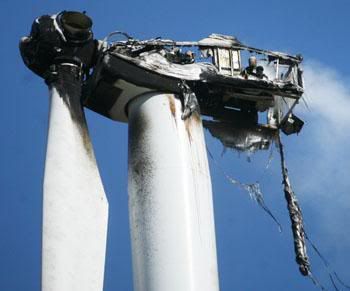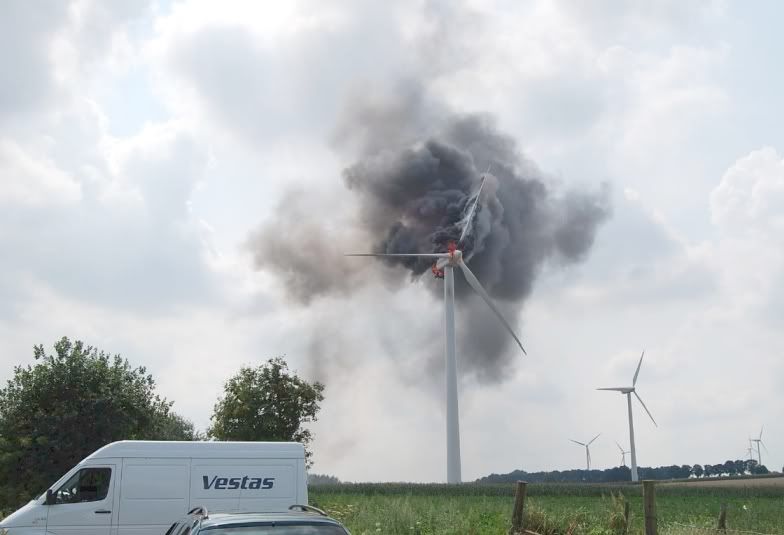I am presently trawling the archives of the Stornoway Gazette, looking for tributes to men who fell in the service of King and country during the First World War. The Gazette was not published until January 1917, meaning that the first half of the Great War was not covered. The tributes are incorporated into my WW1 tribute site "Faces from the Lewis War Memorial" (link leads to page with links to tributes).
Apart from that, I have also come across a tragic accident, in which a sailor was killed on board his ship. The Gazette reported on 4 May 1917 that the Norwegian barque Yuba had been brought in for inspection. The captain reported that he had found one of his seaman lying dead on the deck. He had gone up the rigging in the dark, and had evidently fallen from aloft. The remains were buried at Sandwick Cemetery.
I intend to visit Sandwick Cemetery to find that sailor's grave, and have also found out that the Yuba did not outlive its unfortunate crewmember for very long. German U boat U-50 torpedoed the sailing ship some five weeks later, on 7 June 1917, 110 miles north of Stornoway. The ship was reported to have been en route from Savannah (Georgia, USA) to Aarhus (Denmark). No lives were lost in the attack. The U-boat was destroyed by a mine off the Dutch island of Terschelling on 31 August 1917, with the loss of all hands.
Wednesday, 29 September 2010
Monday, 27 September 2010
Mangersta buy-out bid
The people of Mangersta in Uig (Lewis), pop. 29, has mounted a bid to take the village and its common grazings (more than 9,000 acres) into commounity ownership. At the moment, the area is owned by Uig & Hamnaway Estates. Urras Mhangurstadh (The Mangersta Trust) was formed and incorporated as a company limited by guarantee. This enabled the body to lodge a formal bid with the Scottish Government under the terms of the Land Reform Act (2003).
The Mangersta Trust has said that it aims to halt the population decline suffered by Uig by creating employment and supporting crofting. The Trust hopes to come to a fruitful cooperation with the sitting landlords, leading to a benefit for both community trust and estate. They have taken soundings in the island of Gigha, which was taken over into community ownership in the 1990s.
It is worth noting that the St Kilda Centre is to be built at Mangersta, on a location south of the village near Islivig.
As a long-standing supporter of the community buy-out movement in Scotland I naturally welcome this news, and bearing in mind the Uig & Hamnaway Estates' cooperation with the people of Uig (with regards to the shop), I have every hope that this venture can be established in an amicable and mutually beneficial way.
More information on this on Hebrides Today.
The Mangersta Trust has said that it aims to halt the population decline suffered by Uig by creating employment and supporting crofting. The Trust hopes to come to a fruitful cooperation with the sitting landlords, leading to a benefit for both community trust and estate. They have taken soundings in the island of Gigha, which was taken over into community ownership in the 1990s.
It is worth noting that the St Kilda Centre is to be built at Mangersta, on a location south of the village near Islivig.
As a long-standing supporter of the community buy-out movement in Scotland I naturally welcome this news, and bearing in mind the Uig & Hamnaway Estates' cooperation with the people of Uig (with regards to the shop), I have every hope that this venture can be established in an amicable and mutually beneficial way.
More information on this on Hebrides Today.
Saturday, 25 September 2010
Thursday, 23 September 2010
Windfarms
The overwhelming and recurring theme of my nearly five years as Arnish Lighthouse has been: windfarms. And once again, not to be defeated (or not to be seen to be defeated), a large windfarm development has been launched. Its environmental impact has been published at any rate. A 50-turbine development on land, which has been cleared for such a development, namely in the Bermuda triangle, otherwise known as the tract of pristine Lewis moor, bordered by the Lochs Road in the east, the Pentland Road to the north and west, and the Cleascro Road to the south. A community coordinator is to be appointed by Stornoway Trust, the landowners. All very noble endeavours, I'm sure, for an enterprise that nobody really wants. For such was one of the outcomes of the AMEC windfarm in North Lewis, which foundered on an EU habitat designation a few years ago.
I just cannot get over the blinkered approach adopted by those in local government in Lewis who do not seem to get the message that on-shore windfarms are (to quote an internet contact) "so yesterday" and so not wanted. Worse than that, over the past couple of years, novel sources of renewable energy have risen above the horizon of technical feasibility. How about that tidal barrage at Shader (Barvas)? How about the tidal generator that was lowered into the Pentland Firth off Caithness recently? And since that episode in March this year, when the output of all of Scotland's windfarms was enough to boil 1,000 kettles, I have comprehensively gone off the idea of adopting windfarms as a credible source for our energy requirements.
By all means, Stornoway Trust, adopt a policy of encouraging renewable energy. But please, don't be so narrow in your scope. You won't be the one whose pockets will be lined through this windfarm. You'll be left with the mirrors and beads - whilst the fat cats in the energy industry will grow even fatter.
I just cannot get over the blinkered approach adopted by those in local government in Lewis who do not seem to get the message that on-shore windfarms are (to quote an internet contact) "so yesterday" and so not wanted. Worse than that, over the past couple of years, novel sources of renewable energy have risen above the horizon of technical feasibility. How about that tidal barrage at Shader (Barvas)? How about the tidal generator that was lowered into the Pentland Firth off Caithness recently? And since that episode in March this year, when the output of all of Scotland's windfarms was enough to boil 1,000 kettles, I have comprehensively gone off the idea of adopting windfarms as a credible source for our energy requirements.
By all means, Stornoway Trust, adopt a policy of encouraging renewable energy. But please, don't be so narrow in your scope. You won't be the one whose pockets will be lined through this windfarm. You'll be left with the mirrors and beads - whilst the fat cats in the energy industry will grow even fatter.
Tuesday, 21 September 2010
Napier Commission Report
Over the past few months, I have been transcribing the findings of the Napier Commission into the conditions of the crofters and cottars in the Highlands and Islands of Scotland. So far I have covered the Western Isles and Skye; I am now going through the evidence for Shetland. Maybe of interest to Island Bloggers out there?
Wednesday, 8 September 2010
Seaweed
[caption id="" align="alignnone" width="500" caption="Seaweed"]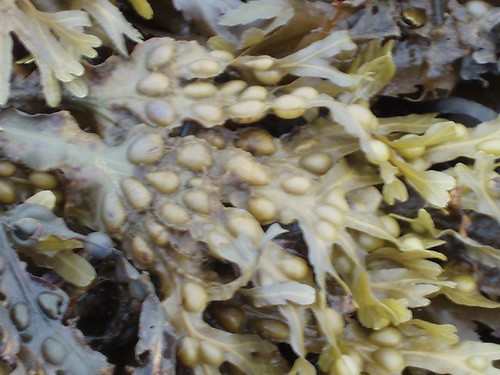 [/caption]
[/caption]
For hundreds of years, the seaweed growing on the shorelines of these islands have provided a source for various materials.
Economically, the kelp became a major contributor towards the economy of the Scottish islands in the 19th century. Napoleon's navy was blockading the United Kingdom 200 years ago, and there was no way that the source material for gunpowder, dried bird droppings, scraped from rocks off the coast of South America (guano), could reach the UK. So, kelp was required and used in huge quantities. Dried and processed in kilns, it reduced to potassium nitrate (potash), which is a base material for gunpowder.
When the Napoleonic wars were over, the shipping lanes opened up and guano quickly supplanted kelp as a source for potash. It was overall a lot cheaper than the labour intensive harvested kelp. The latter was therefore no longer needed, and the price plummeted. It meant severe economic hardship for many islanders, and when the potato famine occurred in the 1840s, it prompted a mass exodus to foreign parts. Kelp continued to be used as a fertiliser on the lazybeds, used by many islanders for growing their crops. In fact to this day, seaweed is being used for that purpose.
A few years ago, a factory opened within the precinct of the Arnish Fabrication Yard, which processes seaweed for various uses, varying from agriculture to the food industry.
Local news website Hebrides Today has announced that seaweed will now also be processed at the Creed Park recycling plant on the Lochs Road (the A859 Stornoway to Tarbert road), 2 miles south of Stornoway. The endproduct will be natural gas (methane), which will power vehicles.
From explosives to fuel - seaweed is making a come-back.
 [/caption]
[/caption]For hundreds of years, the seaweed growing on the shorelines of these islands have provided a source for various materials.
Economically, the kelp became a major contributor towards the economy of the Scottish islands in the 19th century. Napoleon's navy was blockading the United Kingdom 200 years ago, and there was no way that the source material for gunpowder, dried bird droppings, scraped from rocks off the coast of South America (guano), could reach the UK. So, kelp was required and used in huge quantities. Dried and processed in kilns, it reduced to potassium nitrate (potash), which is a base material for gunpowder.
When the Napoleonic wars were over, the shipping lanes opened up and guano quickly supplanted kelp as a source for potash. It was overall a lot cheaper than the labour intensive harvested kelp. The latter was therefore no longer needed, and the price plummeted. It meant severe economic hardship for many islanders, and when the potato famine occurred in the 1840s, it prompted a mass exodus to foreign parts. Kelp continued to be used as a fertiliser on the lazybeds, used by many islanders for growing their crops. In fact to this day, seaweed is being used for that purpose.
A few years ago, a factory opened within the precinct of the Arnish Fabrication Yard, which processes seaweed for various uses, varying from agriculture to the food industry.
Local news website Hebrides Today has announced that seaweed will now also be processed at the Creed Park recycling plant on the Lochs Road (the A859 Stornoway to Tarbert road), 2 miles south of Stornoway. The endproduct will be natural gas (methane), which will power vehicles.
From explosives to fuel - seaweed is making a come-back.
Thursday, 2 September 2010
Nicolson Institute
Just sharing a few images of the area around the Nicolson Institute on Springfield Road in Stornoway. The Pink School, Springfield South, has been knocked down - this is one of the necessities for the building of a new Nic. As the pictures show, this permits some novel views. For a while, at any rate.
[caption id="" align="alignleft" width="500" caption="Springfield North, Nicolson Institute"]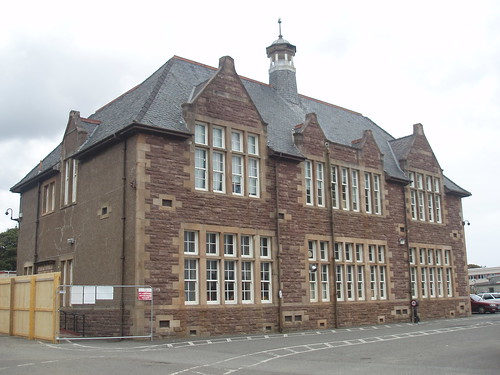 [/caption]
[/caption]
[caption id="" align="alignnone" width="500" caption="The demolished Pink School with the Comhairle offices behind"]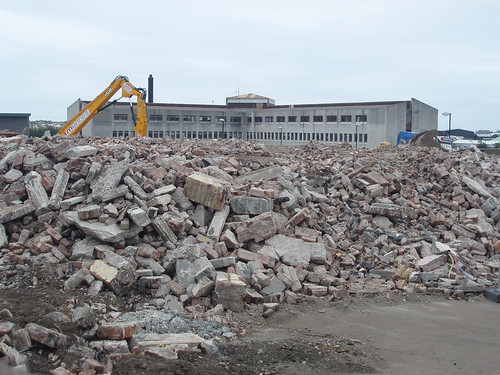 [/caption]
[/caption]
[caption id="" align="alignnone" width="500" caption="Springfield North seen over the remains of Springfield South"] [/caption]
[/caption]
[caption id="" align="alignleft" width="500" caption="Springfield North, Nicolson Institute"]
 [/caption]
[/caption][caption id="" align="alignnone" width="500" caption="The demolished Pink School with the Comhairle offices behind"]
 [/caption]
[/caption][caption id="" align="alignnone" width="500" caption="Springfield North seen over the remains of Springfield South"]
 [/caption]
[/caption]
Subscribe to:
Posts (Atom)




